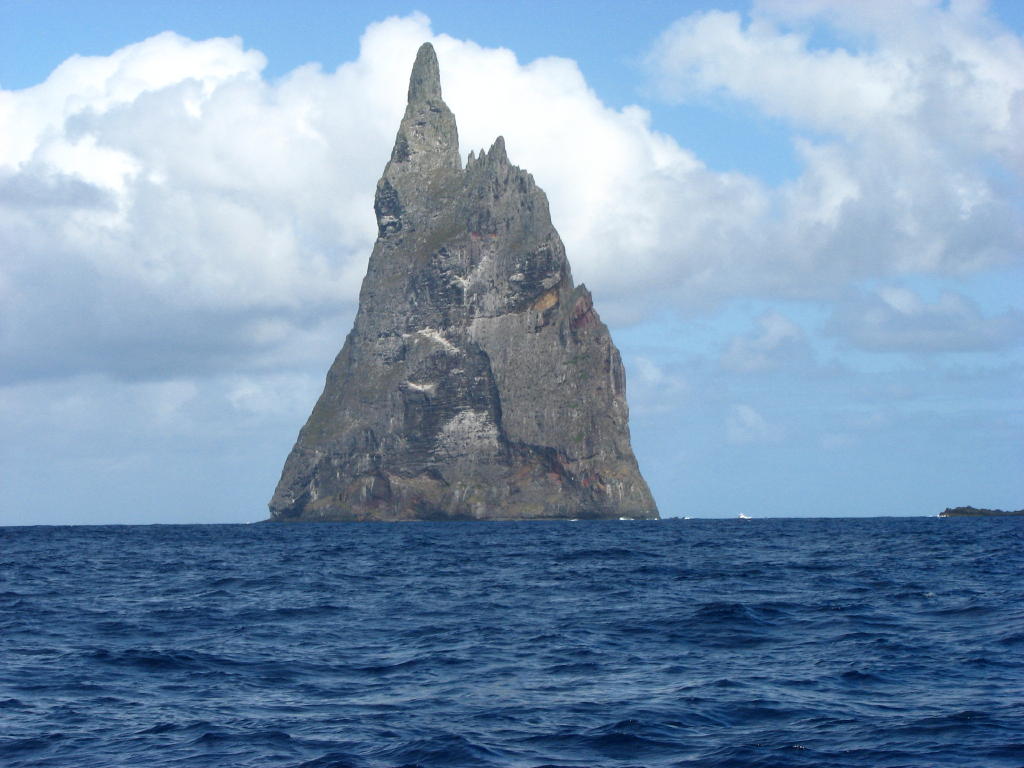The Lord Howe Island stick insect is a species that, for approximately 80 years, was thought to be extinct. The story behind its survival and re-discovery is a remarkable Australian tale and one of the most globally celebrated cases in conservation history.
In 1918, rats were accidentally introduced to Lord Howe Island when a supply ship ran aground at a place called Ned’s Beach. There are a number of theories, but it is thought that when crates of perishables were removed from the ship to avoid spoiling, the rats hitched a ride. The rats quickly discovered the stick insect, along with many other species endemic to the island. The insects rapidly became a food source for the rats, as did the eggs of various bird species. The result was the rapid decline of the stick insect and, after the last confirmed sighting in 1920, it was thought to be extinct.
Since 1964, groups climbing Ball’s Pyramid – a volcanic sea stack 23 kilometres away from Lord Howe Island – claimed to have sighted dead invertebrates that fit the description of the Lord Howe Island stick insect. However, none had found live specimens. The Lord Howe Island Board eventually banned climbing on Ball’s Pyramid without a research permit.
The Lord Howe Island Board knocked back countless requests for permits to climb Ball’s Pyramid because no entomologists were listed in the applications. Eventually, two scientists from the NSW Parks and Wildlife Service, along with an entomologist and a local ranger from Lord Howe Island, organised an expedition out to Ball’s Pyramid to determine once and for all if the insect still existed.
After failing to find any sign of the insect during a daytime climb, one of the team pointed out that they were a nocturnal insect, and that they should try searching again once it got dark. The thought paid off, and the team found over twenty live stick insects. If this was not miraculous enough – despite searching every bush on the huge volcanic stack, they were all found on a single melaleuca bush.
The group decided that a conservation program was needed, as even a small landslide could take out the bush and thus the entire species. Unfortunately, the re-discovery of the species raised some questions which resulted in a lot of bureaucracy and paperwork, so it took years to obtain permission to collect live specimens.
Eventually, they were allowed to take two breeding pairs. One pair went to a private breeder in NSW – and died within a week. The other pair went to Melbourne zoo and, after some close calls with the health of the female, went on to breed and create a population in captivity.
A group of stick insects have since been taken back to Lord Howe Island, but remain in captivity there awaiting the successful implementation of a rat eradication plan. The original population has not been visited in some time, although at least one live female has been removed since in an attempt to diversify the captive population at Melbourne Zoo. Several other zoos around the world now hold ‘insurance’ populations, in case something unexpected happens to the insects in Melbourne. For instance, due to reduced gene diversity, the captive zoo population is more susceptible to illness than the original population.
In late 2017, after a little bit of politicking, the Lord Howe Island Board voted on a rat eradication plan that was scheduled to begin this year. It will be the first eradication in the world to occur on an inhabited island. There will be costs for some local wildlife, but various feasibility studies have been conducted to ensure these other species will recover, or that impact will be minimal.
Perhaps, soon, locals will notice that instead of rodents going ‘bump’ in the night, giant stick insects are taking their place. It could be only a matter of time until we see a return of the Lord Howe Island stick insect to its original home.
We acknowledge the Ngunnawal and Ngambri people, who are the Traditional Custodians of the land on which Woroni, Woroni Radio and Woroni TV are created, edited, published, printed and distributed. We pay our respects to Elders past and present. We acknowledge that the name Woroni was taken from the Wadi Wadi Nation without permission, and we are striving to do better for future reconciliation.
